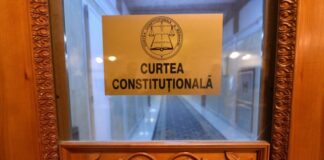Fitch Ratings on Thursday affirmed Romania-based CEC Bank S.A.’s (CEC) Long-Term Issuer Default Rating (IDR) at ‘BB’ with a Stable Outlook, its Viability Rating (VR) at ‘bb’, and Government Support Rating (GSR) at ‘b’.
CEC’s IDRs are driven by its VR, which reflects the bank’s moderate, albeit strengthening, business profile, adequate capitalisation and reasonable funding and liquidity. These factors offset its asset quality and profitability that are weaker than that of the sector. CEC’s risk profile is commensurate with its fairly simple business model, with underwriting standards broadly in line with domestic industry standards, but with partly decentralised lending approval and fairly unsophisticated risk controls.
The Outlook change on the Romanian sovereign to Negative recently has led to a negative revision of the operating environment (OE) outlook for Romanian banks. The OE is assessed at ‘bbb-‘ and capped at the sovereign rating. It will be revised lower should the sovereign be downgraded.
CEC is a medium-sized, state-owned bank. It operates a universal bank business model with lending primarily to the non-retail segment, including a large, but declining, exposure to public-sector entities. The bank is largely funded by granular retail customer deposits.
CEC’s risk profile assessment is commensurate with its business model and balances a conservative risk appetite for retail lending, dominated by mortgage loans, against a moderately concentrated and fast-growing corporate loan portfolio.
CEC’s operating profit improved to 2.5% of risk-weighted assets (RWAs) in 1H24, but its profitability remains weaker than larger peers’, reflecting its loan book structure, higher funding costs, and less diversified revenues. We expect CEC’s profitability to moderately decline over the next two years.
Fitch says that a severe weakening in the operating environment that severely affects business prospects for the Romanian banks would increase pressure on CEC’s ratings, which is a factor that could, individually or collectively lead to negative rating action/downgrade.
A stabilisation of the Romanian banks’ operating environment and a record of sustained improvements in profitability, underpinned by a structural improvement of its business profile, while its asset-quality metrics materially improve and converge toward those of its domestic peers, are mentioned as factors that could, individually or collectively, lead to a positive rating action/upgrade.
AGERPRES


